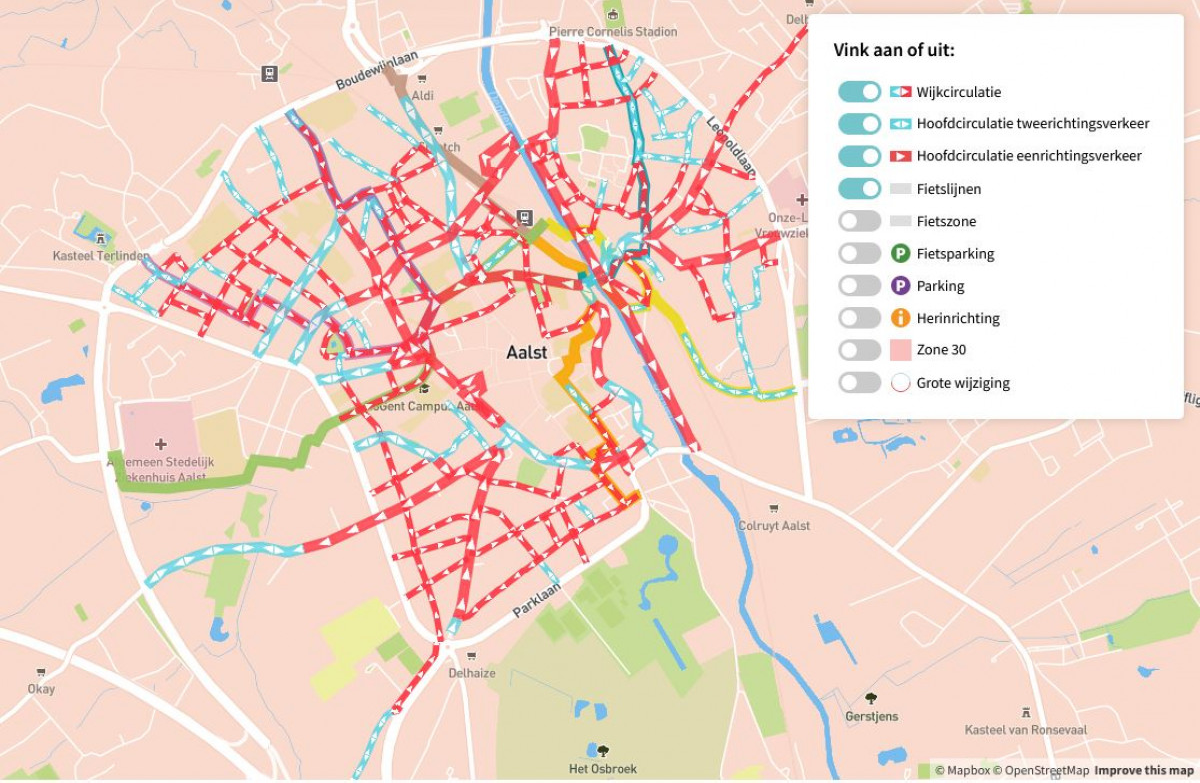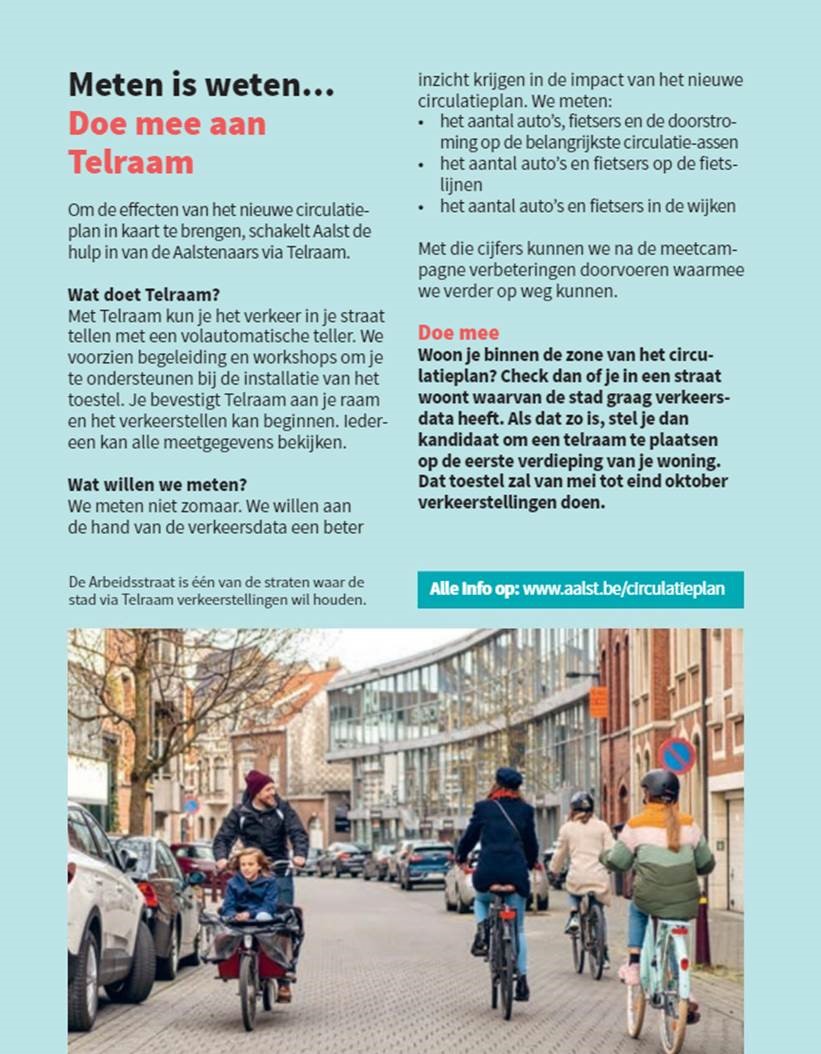Network in the spotlight: circulation plan Aalst
Circulatieplan Aalst • Wouter Florizoone 17 November 2021

As early as the beginning of 2021, the city of Aalst decided to deploy Telraam devices as part of the circulation plan. The purpose of this was the permanent and detailed monitoring of the implementation of this plan. In April 2021, the roll-out of 40 Telraam devices to as many residents of Aalst was started. By deliberately deploying the devices at strategic locations in the city, the impact and results of these plans could be communicated openly and transparently to citizens.

First of all, the devices could carry out a pre-measurement. This measurement could map the situation in detail prior to the introduction of the circulation plan. In the days after the introduction of the circulation plan, the impact of the introduced plan could be monitored immediately. Within the network dashboard, the data of all devices from the Aalst network were bundled. This way, trends at network level can be detected and comparisons can be made between streets and between specific periods.
The big test for the circulation plan came at the beginning of September with the restart of the schools and work traffic. At the network level, this made it possible to detect peak moments at the school gate, such as in Watertorenstraat (see graph).
It was not only us or the mobility unit of the City of Aalst who worked with the Telraam data. The open Telraam data and visualisations can be consulted by anyone via telraam.net, as can the raw counting data accessed via the Telraam API.
The local ethical hacker, Inti De Ceukelaire, built the Circulation Awards website https://circulatieawards.be/ on the basis of the Telraam data. On this website, the Telraam data for all the streets in Aalst are monitored and an award is presented for the streets that are rising the most ('rising star') or falling the most ('free fall') in terms of motorized traffic. Initiatives that use Telraam in this way, visualize it and enter into interaction create local interaction with the aim of improving traffic livability. Something we certainly want to encourage further.

A few months after the introduction of the circulation plan, the Telraam data allow an initial evaluation to be carried out. The data set is rich enough to make targeted adjustments at a few points. The effect of these adjustments can also be accurately mapped out thanks to the Telraam devices. Being on the ball in this process offers great progress in terms of transparency and data-driven policy-making. A process to which we, as a Telraam team, are happy to contribute.
More information about the circulation plan in Aalst? Click here (only in Dutch).